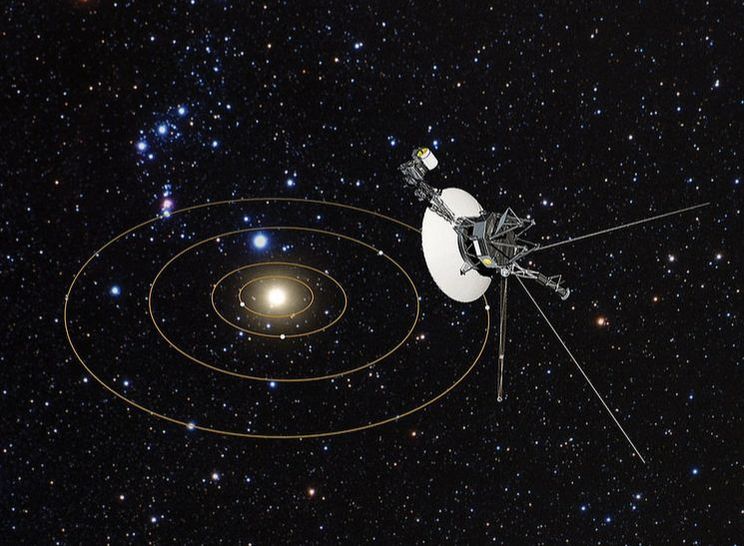- Home
- Process Worldview
- Community
- Art and Music
- Whitehead and Process Thinking
- Podcasts
- Spirituality
- Ecological Civilization
- Education
- Contact
- Social Justice
- Science
- Animals
- Sacred Poems
- Whitehead Videos
- Index of All Titles
- Practicing Process Thought
- Process Spirituality: A Spiritual Alphabet
- Recent Posts
Why Be Christian?
Christianity as a Paradigm Shift from
Force and Competition to Relational Power
by Teri Daily
A paradigm shiftChristmas doesn’t just come once a year; Christmas happens whenever the kingdom of heaven is revealed as an alternative paradigm. It takes place whenever we see a way forward not based on brute force, fear, or competition, but based on love, abundance, and relationship. The questions we askAnd so as we prepare to enter the season of Epiphany, let these questions claim our attention: When and where do we succumb to a worldview of force, competition, and scarcity? In every situation, what is the more life-giving alternative? In every situation, what does it look like to live in a world where power comes in the form of a baby, love is unlimited, and everyone has enough? Who are bold, courageous companions to travel with us—those who have also seen the kingdom of heaven and can hold the vision for us when our own memory fades or our imagination fails? The glimmer of a starAnd while these questions float in your mind, keep awake for the glimmer of a star, a baby in a manger, love that replaces fear—all anomalies in the existing paradigm, anomalies that point to new and amazing possibilities, anomalies that give us the courage to go home by another way. Home by another wayAnd yet, in the Incarnation we see an alternative that, once glimpsed, can’t be unseen. This alternative speaks of self-giving love as true power, of abundance and inclusion and relationship, of losing yourself to save yourself....It inevitably launches us on new paths; we find ourselves compelled (in the words of a James Taylor song) to go home by another way. The Shimmering Hours
|
In 1962, Thomas Kuhn’s book The Structure of Scientific Revolutions was published; its publication changed the way we think about the history of science. Kuhn proposed that, instead of advancing in a continuous parade of incremental change, the progress of science is marked by episodic revolutions in knowledge—times when anomalies in the old paradigm ultimately force scientists to reimagine the way things truly are, to embrace a new vision of this world we inhabit. Of course, cracks in the old way of thinking are always present long before a paradigm shift takes place, but we human beings are reluctant to let go of our old ways of understanding until a valid alternative is in place. Instead, we soldier on, attached to the old paradigm, rationalizing every puzzle piece that doesn’t fit, forcing its edges into spaces in the existing framework. The anomalies eventually pile up and the alternative theory gains credibility, until at last there is a major shift in the scientific landscape. But just before that shift occurs, the scientific community is riddled with forceful debates and schism—things get messier and more complicated before the proverbial light shines into our scientific darkness. Once it does, though, it’s impossible to undo. That’s the nature of insight. Like “getting a joke” or seeing an image embedded in a three-dimensional picture—once we see it, our minds can’t “unsee” it.
The classic example of such a paradigm shift is the Copernican Revolution. As the ability to observe celestial bodies increased over time, a vision of the solar system with the earth at the center required more and more adjustments in order to remain valid. Things didn’t fit; the old paradigm was being stretched. Yet, when Copernicus’s theory—with the sun as the stationary object in our solar system and not the earth—was published in 1543, it was met with rejection. As Kuhn recognized, such opposition is expected in the midst of a scientific revolution. Still, there are always a few bold scientists willing to explore alternatives more fully than their colleagues, and such was the case here. It was finally the combination of the work of Galileo, Kepler, and Newton that cemented the Copernican theory—a theory we could no more discard today than we could the theory that we require air to breathe. I think this resistance to the truth of new paradigms, and the struggle to force old paradigms to continue to function, is what we see in the story of Jesus’ birth as told by Matthew. In Matthew's gospel, wise men (astrologers, magi, or priests) come to Jerusalem from the East, asking where the child is—the child who has recently been born King of the Jews. They had seen the star that told of his birth. Matthew writes that “when King Herod heard this, he was frightened, and all of Jerusalem with him.” Word spreads quickly, it seems, in Jerusalem—especially word that threatens the existing paradigm. Herod calls together the chief priests and the scribes who are the experts on scripture, asking them where the Messiah was to be born. Bethlehem, they say—drawing on the words of the prophet Micah. Fear tends to make us do things in secret, and it’s no different for Herod. He secretly calls the wise men, asks them when the star first appeared, and sends them to Bethlehem to find the new king and return with word of his whereabouts. Of course, we know how the story goes—the wise men bring gifts to the young king, and then are warned in a dream not to return to Herod but to go home by a different way. Why is Herod so scared, and all the people of Jerusalem with him? The birth of the Messiah offers, however quietly at first, the possibility of an alternative to the existing paradigm. The existing worldview is built on coercive power, on brute force, on scarcity, competition, and domination; it is red in tooth and claw. And when threatened by anything that even whispers the possibility of a different truth, this old paradigm resists with all its might. We’ve seen this is scripture before; Matthew counts on that. See, Matthew paints a picture of Jesus that is meant to stir up images of the story of Moses; in Matthew, Jesus is pictured as a second Moses. We see it from the very beginning—the hard-heartedness of Pharaoh is found also in Herod; when confronted with alternative power (the strength of the Hebrews in Pharaoh’s case and the birth of an infant king in Herod’s), they both respond with a massacre of male infants; Jesus’s family flees and then brings him up from Egypt when the threat subsides, just as God’s salvation for the Hebrews included coming up from Egypt; Jesus gives five discourses in the gospel of Matthew, reminiscent of the five books of the Torah; and in Matthew, when Jesus gives his famous sermon with the beatitudes, he does so on a mountain and not on a plain as in Luke—it’s an obvious reference to Moses at Mount Sinai. The point here is that when Matthew portrays Herod’s fear and reluctance to let go of the old paradigm of coercive power, we are expected to make the connection with Pharaoh in the days of Moses. We are expected to see the old paradigm as stubborn and resistant and almost as old as history itself. We are expected to realize that when an alternative first appears, things always get harder, more fractured, and more painful before a new path becomes reality. Real change doesn’t come cheap. Maybe that’s what Jesus means when he says later in Matthew: “Do not think that I have come to bring peace to the earth; I have come not to bring peace, but a sword” (10:34). We learn from Kuhn’s theory and Matthew’s gospel that the juxtaposition of worldviews can make for some rough rides; we may even choose to return to the familiar paradigm rather than brave the storm. And yet, in the Incarnation we see an alternative that, once glimpsed, can’t be unseen. This alternative speaks of self-giving love as true power, of abundance and inclusion and relationship, of losing yourself to save yourself. Despite all efforts to absorb it into Herod’s existing paradigm, the Incarnation can’t be stuffed into the same old container. It requires new wineskins. It inevitably launches us on new paths; we find ourselves compelled (in the words of a James Taylor song) to go home by another way. That’s the truth of Christmas. Christmas doesn’t just come once a year; Christmas happens whenever the kingdom of heaven is revealed as an alternative paradigm. It takes place whenever we see a way forward not based on brute force, fear, or competition, but based on love, abundance, and relationship. This doesn’t mean that following this alternative path is always easy—it isn’t. Often we are met with resistance, from those with so much invested in the familiar paradigm and from those afraid to take an unfamiliar road. Often we are riddled with doubts, especially when the results are messy, complicated, and unlike anything we expected. I suspect the wise men second guessed their actions, especially when they heard of Herod’s decree to kill the male infants. Had they done the right thing? Wouldn’t it have been better to give up one infant and save all the others? Did they understand the dream correctly? I would be surprised if these thoughts never entered their minds. Living with a foot in each world is a difficult thing to do; sometimes the path forward is overgrown and hard to find. But once we’ve experienced the presence of God and have glimpsed the kingdom of heaven, we can’t live as if there’s no alternative to the old paradigm, as if any world makes sense other than this dream of God. And so as we prepare to enter the season of Epiphany, let these questions claim our attention: When and where do we succumb to a worldview of force, competition, and scarcity? In every situation, what is the more life-giving alternative? In every situation, what does it look like to live in a world where power comes in the form of a baby, love is unlimited, and everyone has enough? Who are bold, courageous companions to travel with us—those who have also seen the kingdom of heaven and can hold the vision for us when our own memory fades or our imagination fails? And while these questions float in your mind, keep awake for the glimmer of a star, a baby in a manger, love that replaces fear—all anomalies in the existing paradigm, anomalies that point to new and amazing possibilities, anomalies that give us the courage to go home by another way. |

